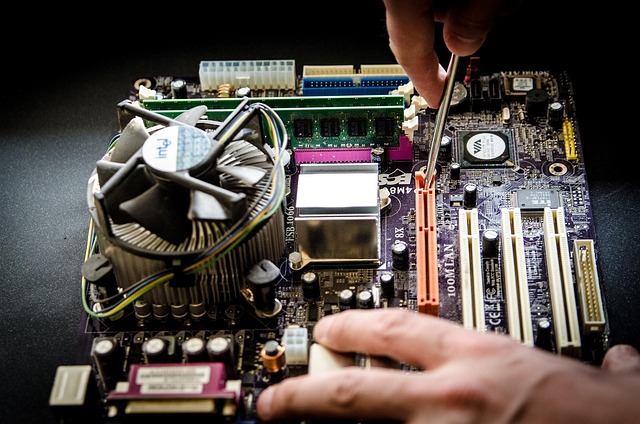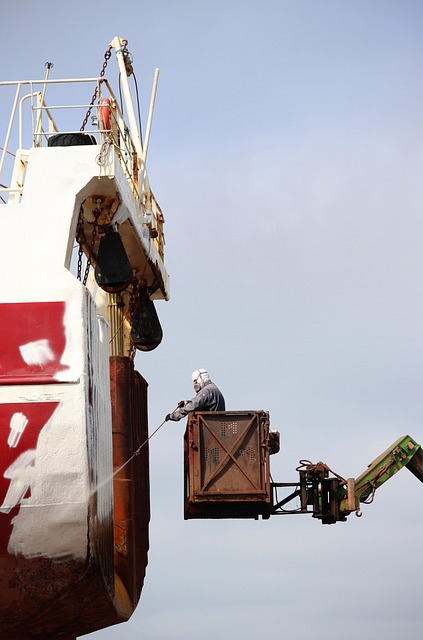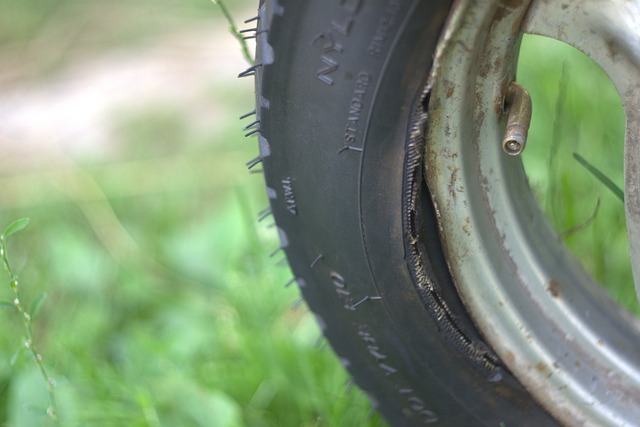Soil instability, driven by factors like poor compaction and organic intrusion, causes structural damage. Modern Foundation Repair Specialist techniques, such as deep foundations and polymer stabilizers, offer cost-effective, environmentally friendly solutions for diverse soil types. Geotextiles reinforce soils, extending structure lifespans. Case studies showcase successful, durable applications. Future trends include bio-based stabilizers and smart materials, emphasizing sustainability in a growing market demand.
“Soil instability poses significant challenges, particularly in construction and infrastructure development. This comprehensive guide explores cost-effective soil stabilization techniques, delving into the root causes of instability and their impact. We conduct a comparative study between traditional and modern methods, highlighting budget-friendly alternatives. The role of foundation repair specialists is scrutinized for their expertise in soil stabilization, with a focus on innovative solutions like geotextiles. Real-world case studies demonstrate successful implementations, and we look ahead to sustainable, eco-friendly practices shaping the future of this crucial field.”
Understanding Soil Instability: Common Causes and Effects

Soil instability is a prevalent issue that can lead to significant structural problems, especially for older or poorly constructed buildings. Understanding the common causes and effects of this phenomenon is essential for foundation repair specialists and property owners alike. One of the primary reasons behind soil instability is poor soil compaction. Inadequate compaction during construction allows water and air to penetrate the soil, causing it to expand and contract over time, leading to settling and cracking in foundations.
Another frequent cause is the presence of organic materials, such as trees and plants, which can alter the soil’s structure and moisture content. The roots of trees can exert pressure on nearby structures, while decomposing plant matter adds moisture, making the soil more susceptible to erosion. Additionally, geological factors like steep slopes, poor drainage, and nearby bodies of water contribute to soil instability, exacerbating the effects during heavy rainfall or earthquakes, resulting in severe foundation damage over time.
Traditional vs. Modern Stabilization Methods: A Comparative Study

In the realm of soil stabilization, the evolution from traditional methods to modern techniques has brought about significant advancements and cost savings for foundation repair specialists. Traditional practices often involved extensive excavation and the use of expensive materials like concrete and steel to reinforce structures. These methods, while effective, could be costly and disruptive to the surrounding environment.
Modern stabilization techniques, on the other hand, offer a more efficient and economical approach. Innovations such as deep foundations, soil cementation, and polymer-based stabilizers provide durable solutions with reduced environmental impact. For instance, soil cementation combines cement and water to strengthen soil in place, eliminating the need for extensive excavation and reducing material costs. These modern methods not only offer cost savings but also contribute to more sustainable construction practices, making them increasingly popular among foundation repair specialists.
Cost-Effective Solutions: Budget-Friendly Techniques Explored

Many homeowners often turn to Foundation Repair Specialists for soil stabilization, but there’s a growing trend towards cost-effective techniques that offer long-term solutions without breaking the bank. Budget-conscious individuals are exploring innovative and affordable methods to ensure their property’s structural integrity. One such solution involves the use of polymeric stabilizers, which can enhance soil strength and bearing capacity, thus preventing settlement issues.
These stabilizers are relatively inexpensive compared to traditional foundation repair methods. They are easily applicable and can be a game-changer for those looking for quick and affordable fixes. Additionally, techniques like deep foundation stabilization using jet grouting have gained popularity due to their cost efficiency. Jet grouting creates a strong, continuous column of compacted soil, providing an effective and long-lasting solution for unstable soils, without the high costs associated with more intensive methods.
The Role of Foundation Repair Specialists in Soil Stabilization

Foundation repair specialists play a pivotal role in cost-effective soil stabilization, addressing underlying issues that can compromise structural integrity. They employ advanced techniques and materials to reinforce weak or unstable soils, preventing further erosion and settlement. These experts assess the unique challenges posed by varying soil types, including expansive clays, sandy loams, and unstable slopes, tailoring their solutions to specific site conditions.
Through methods like deep foundation enhancement, soil stabilization treatments, and structural support systems, foundation repair specialists ensure buildings rest on solid ground. Their expertise is crucial for safeguarding investments, extending the lifespan of structures, and mitigating potential risks associated with soil instability. By partnering with these professionals, property owners can achieve long-lasting stability at a fraction of the cost of complete reconstruction.
Geotextiles: An Innovative Approach to Strengthen Soils

Geotextiles, a relatively modern innovation in soil stabilization, offer an effective and cost-friendly solution for Foundation Repair Specialists. These synthetic fabrics are designed to reinforce soils, preventing erosion and enhancing structural integrity. By placing geotextiles between loose soil layers, they act as a barrier, improving the overall strength and stability of the ground.
This innovative approach has gained traction in various construction projects, from residential foundations to large-scale infrastructure developments. Foundation Repair Specialists appreciate geotextiles’ versatility and ease of installation. They are particularly useful in areas prone to erosion or where soil conditions pose challenges for traditional building methods. Geotextile reinforcement can extend the lifespan of structures, reduce maintenance costs, and provide a more robust foundation for future construction.
Case Studies: Successful Implementation for Long-Lasting Results

In the realm of cost-effective soil stabilization, numerous case studies highlight the successful implementation of various techniques for long-lasting results. Foundation repair specialists have played a pivotal role in addressing structural challenges posed by unstable soils. Through innovative solutions, they’ve helped transform problematic sites into sturdy, secure foundations, averting costly repairs down the line.
One notable example involves the reinforcement of deep soil layers using modern stabilization methods, such as chemical or mechanical treatments. These approaches not only enhance soil capacity but also improve its bearing strength, ensuring structures remain intact for generations. Such successful implementations serve as a testament to the effectiveness and longevity of cost-effective soil stabilization strategies, benefitting both property owners and Foundation repair specialists alike.
Future Trends: Sustainable and Eco-Friendly Stabilization Practices

The future of soil stabilization looks promising with a growing trend towards sustainable and eco-friendly practices. Foundation repair specialists are increasingly adopting innovative solutions that minimize environmental impact while offering long-lasting results. One such method is using bio-based stabilizers, derived from natural materials like biosolids and plant extracts, which can replace traditional chemical stabilizers. These alternatives not only reduce pollution but also promote a more holistic approach to infrastructure development.
Additionally, advanced technologies such as geosynthetics and smart materials are gaining traction. Geosynthetics, like geogrids and geomembranes, offer enhanced strength and durability while being recyclable. Smart materials, capable of self-healing or adapting to changing conditions, represent a groundbreaking step in soil stabilization. As the demand for cost-effective and environmentally conscious solutions grows, these trends will likely shape the future of the industry, providing Foundation repair specialists with efficient and sustainable options.
